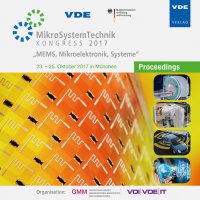Modeling Shear Stress and Oxygen Concentration for Optimization of Micropillars Microbioreactors
Konferenz: MikroSystemTechnik 2017 - Kongress
23.10.2017 - 25.10.2017 in München, Deutschland
Tagungsband: MikroSystemTechnik 2017
Seiten: 4Sprache: EnglischTyp: PDF
Persönliche VDE-Mitglieder erhalten auf diesen Artikel 10% Rabatt
Autoren:
Venegas-Rojas, Deybith (Institut für Mikrosystemtechnik, Eißendorfer Str. 42, 21073 Hamburg, Germany & Instituto Tecnológico de Costa Rica, Cartago, Costa Rica)
Budde, Jens; Trieu, Hoc Khiem (Institut für Mikrosystemtechnik, Eißendorfer Str. 42, 21073 Hamburg, Germany)
Noerz, Dominik; Juecker, Manfred (Center for Experimental Medicine, Institute of Biochemistry and Signal Transduction, University Medical Center Hamburg-Eppendorf, 20246 Hamburg, Germany)
Inhalt:
This work presents a novel microbioreactor (MBR) design in which differences in geometry, shear stress, and oxygen concentration were studied and optimized for cell culture. In this design, micropillars were used for trapping 3D cell structures inside the cultivation chamber. The aim is to model shear stress and oxygen concentration with different geometries and initial conditions for continuous perfusion to optimize the design to obtain healthy mechanical stimulation and oxygen concentration for the cell culture. Finite element method (FEM) simulations were used to study and optimize the effect of parameters such as flow rate, shear stress, oxygen concentration, micropillars geometry, and PDMS thickness. Simulations were applied to obtain data on the surface of the MBR, in transversal planes and parallel lines. Also, the design was fabricated and tested with static and perfused 3D cell culture. The simulations show that the micropillars affect the shear stress only slightly in the cultivation chamber (6 % reduction). During the experiments, the effect of micropillars size, shape, and configuration on its mechanical stability and shear stress control at increasing flow rate was observed. It was also found that the oxygen diffusion through the top layer of PDMS is sufficient for the cells consumption in static and in perfusion modes. The devices were tested with several HepG2 3D cell cultures which remained healthy and grew in the MBR. With this study, it was found that the aforementioned parameters can be con-trolled in order to keep a healthy microenvironment according to specific necessities of different cell types, and that this MBR approach can be used for a wide range of experiments such as drug screening.


